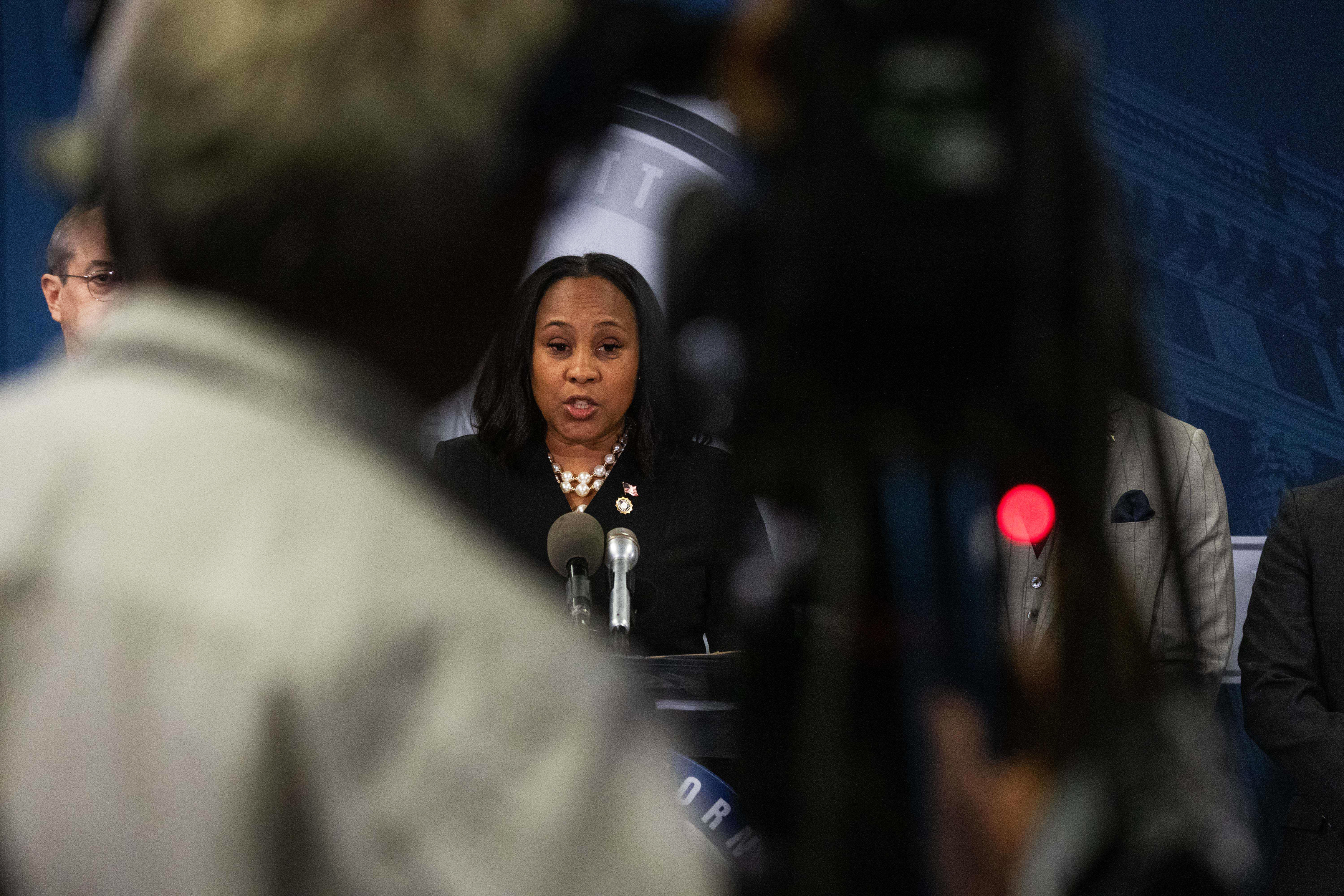It's natural for dogs to lap up the first source of water they can find after a long walk outdoors, especially in the summer heat, but as their owner, you should make sure they are only drinking from safe sources.
Puddles, in particular, may look like an oasis for thirsty dogs, but these stagnant waters often contain toxins, parasites, and bacteria that could end up leaving your best friend with all kinds of infections and diseases, and you with a massive vet bill.
Sometimes you may not even notice they're drinking from a puddle. That's why you should pay close attention to your dog when on walks, and go prepared to make sure it doesn't happen.
Newsweek spoke to a veterinarian to find out about the dangers of puddle waters for your dog, and how to ensure they stay clear of them.

Why Your Dog Should Never Drink From a Puddle
Dr. Sarah Gorman, managing veterinarian at Small Door Veterinary in Boston's Newton Centre, told Newsweek there are plenty of reasons why you should never let your dog drink from puddles, including:
Contaminated Water
According to Gorman, puddles often contain a variety of contaminants, including bacteria, viruses, and parasites. These can lead to gastrointestinal infections and other health issues in dogs, and even seemingly clean puddles can harbor harmful micro-organisms.
Chemicals and Toxins
They can also contain chemicals such as pesticides, fertilizers, and antifreeze, which are extremely toxic to dogs. Ingesting even small amounts of these substances can have serious consequences for your pet's health.
Standing Water
Moreover, puddles are typically stagnant, which means the water is not moving or being filtered, and stagnant waters can become a breeding ground for harmful bacteria such as Leptospira, which can cause severe infections in dogs (leptospirosis).
Mosquitoes and Parasites
Gorman said that puddles can attract insects like mosquitoes, which can transmit diseases such as heartworm to dogs. Additionally, standing water is an ideal environment for parasites to thrive, and dogs can become infected by drinking from contaminated puddles.
Unknown Substances
Because puddle waters are usually so dirty, you can't always see what's in them. There might be sharp objects, debris, or other hazards that your dog could ingest while drinking, which can lead to choking or gastrointestinal blockages.
Dehydration Risk
Another big threat that puddles pose is dehydration. Gorman said: "Allowing your dog to drink from puddles may discourage them from drinking fresh, clean water from their bowl, potentially leading to dehydration."
What To Do if Your Dog Drinks From a Puddle
Even the most attentive owners sometimes get distracted and may not notice that their dog has drunk contaminated water until they start feeling unwell.
If you suspect that your dog has consumed contaminated water from a questionable source or if they exhibit any signs of illness, it's essential to consult your veterinarian promptly to rule out any health concerns and receive appropriate treatment if necessary.
Symptoms Your Dog Has Caught an Infection
If your dog has contracted gastroenteritis from puddle waters, you should usually be able to see symptoms in one to three days.
Gastroenteritis is a term that refers to any type of irritation or inflammation of the stomach and intestines, such as from food poisoning. Symptoms in dogs include vomiting, diarrhea, lethargy, abdominal pain, and loss of appetite.
One possible cause of gastroenteritis is Giardia, an intestinal parasite your dog is likely to have caught from the contaminated puddle waters.
Symptoms that your dog has caught this parasite include persistent vomiting and diarrhea, which may last anywhere from a few days to several weeks. During this time your dog will be very contagious, so you should avoid daycare or contact with any other dogs in general.
Your veterinarian may treat your dog with medication such as a course of antibiotics, depending on the severity of their symptoms, and if they are too dehydrated they may need to be put on an IV drip to replenish lost fluids.
How to Prevent This From Happening
To ensure your dog's health and safety, you should always be prepared when you go on a walk, and provide them with clean, fresh water in a bowl, discouraging them from drinking from puddles or other potentially contaminated sources.
An easy way to avoid unnecessary trouble is always to carry a foldable bowl and a bottle of clean water for your dog, and offer them some as soon as they start getting thirsty.








